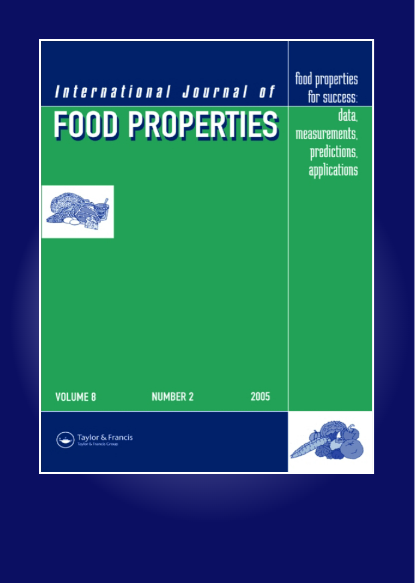A comparative study of high-pressure processing and thermal processing techniques on characteristics and microbial evaluation of orange juice
IF 3.9
3区 农林科学
Q2 FOOD SCIENCE & TECHNOLOGY
引用次数: 0
Abstract
This study investigates the impact of thermal and high-pressure processing on the quality indicator of orange juice and its storage stability. The pressure was applied at 400 MPa and 600 MPa for 3, 6, and 9 min to process the juice and evaluate the quality of orange juice during 60 days of storage with every 30-day interval. HPP conditions (400 MPa and 600 MPa for 3, 6, and 9 min) did not significantly change the ascorbic acid content of orange juice, in contrast to thermal processing where a crucial decrease in ascorbic content was observed. Ascorbic acid content increased non-significantly from 40.03 to 40.69 (mg/100 g) and 40.79 when applied for 3 and 6 min, respectively, while thermal processing reduced its content up to 33.45 (mg/100 g). Ascorbic acid at 600 MPa was observed at 41.19 (mg/100 g) when treated for 6 min. Carotenoid content was increased when HPP was from 8.6 to 9.14 (mg/100 ml) during 400 MPa for 9 min and 11.65 (mg/100 ml) for 6 min at 600 MPa compared to the corresponding untreated sample and thermally treated sample. The total soluble solids, pH, and acidity of the orange showed stability after HPP and during 60 days of storage. The natural microbiological load (yeast and mold, E-Coli log CFU/ml) was observed below 1 log reduction at 30 days of storage and 2 log reduction during days of storage. This study identified different pressure levels to produce nutritionally and microbiologically stable orange juice compared to thermally processed and untreated samples.高压加工与热加工工艺对橙汁特性及微生物评价的比较研究
研究了热高压处理对橙汁品质指标及贮存稳定性的影响。在400 MPa和600 MPa的压力下分别施加3、6和9 min,以每隔30天的间隔对60天的橙汁进行加工和质量评价。高温处理条件(400mpa和600mpa, 3、6和9分钟)没有显著改变橙汁的抗坏血酸含量,而热处理条件下,抗坏血酸含量显著降低。处理3 min和6 min时,抗坏血酸含量分别从40.03增加到40.69 (mg/100 g)和40.79,增幅不显著;在600 MPa下处理6 min,抗坏血酸含量为41.19 (mg/100 g)。在400 MPa下处理9 min, HPP从8.6增加到9.14 (mg/100 ml),在600 MPa下处理6 min,类胡萝卜素含量为11.65 (mg/100 ml),与未处理样品和热处理样品相比,类胡萝卜素含量增加。HPP处理后和60 d贮藏期间,甜橙的可溶性固形物总量、pH值和酸度均保持稳定。天然微生物负荷(酵母和霉菌,大肠杆菌对数CFU/ml)在储存30天时降低了1个对数,在储存几天内降低了2个对数。本研究确定了与热处理和未经处理的样品相比,不同的压力水平可以生产营养和微生物稳定的橙汁。
本文章由计算机程序翻译,如有差异,请以英文原文为准。
求助全文
约1分钟内获得全文
求助全文
来源期刊

International Journal of Food Properties
工程技术-食品科技
CiteScore
5.20
自引率
3.40%
发文量
167
审稿时长
4.3 months
期刊介绍:
The International Journal of Food Properties publishes original research papers devoted to all scientific and applied aspects of food properties. The emphasis is on measurement methods, development of standards, and data on food properties, predictions, and applications.
The International Journal of Food Properties brings together the widely scattered research in the area of food properties and provides an international forum for scientists and technologists for rapid dissemination of their research results, ideas, and knowledge. Other features include review articles, book reviews, letters to the editor, conference papers, news, and commercial advertisements.
 求助内容:
求助内容: 应助结果提醒方式:
应助结果提醒方式:


